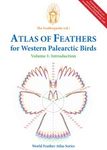![Evolutionary Ecology of Birds Evolutionary Ecology of Birds]()
Click to have a closer look
About this book
Contents
Customer reviews
Related titles
About this book
Birds show bewildering diversity in their life histories, mating systems and risk of extinction. Why do albatrosses delay reproduction for the first 12 years of their life while zebra finches breed in their first year ? Why are fairy-wrens so sexually promiscuous while swans show lifelong monogamy? Why are over a quarter of parrot species threatened with global extinction while woodpeckers and cuckoos remain secure?
Some of these topics, such as delayed onset of breeding in seabirds, are classic problems in evolutionary ecology, while others have arisen in the last decade, such as genetic mating systems and extinction. Birds offer a unique opportunity for investigating these questions because they are exceptionally well-studied in the wild. By employing phylogenetic comparative methods and a database of up to 3,000 species, the authors identify the ecological and evolutionary basis of many of these intriguing questions. They also highlight remaining puzzles and identify a series of challenges for future investigation.
This is the most comprehensive reappraisal of avian diversity since David Lack's classic "Ecological Adaptations for Breeding in Birds". It is also the most extensive application of modern comparative methods yet undertaken. This novel approach demonstrates how an evolutionary perspective can reveal the general ecological processes that underpin contemporary avian diversity on a global scale.
Contents
Comparative biology of birds
1: Comparative methods
Natural selection and diversity in life histories
2: Diversity among living species
3: Patterns of covariation between life history traits
4: Ecological basis of life history and diversity
5: Further problems
Sexual selection and diversity in mating system
6: Variation in mating systems and sexual dimorphism
7: Ecological basis of mating system diversity
8: Ecological basis of sexual dimorphism
9: Further problems
Birth and death of bird species
10: Variation in extinction risk and species richness
11: Explaining variation and extinction risk
12: Explaining variation in species richness
13: Further problems
14: Conclusions
Customer Reviews
By: Peter M Bennett(Author), Ian PF Owens(Author)
278 pages, 55 b/w illustrations, tables
"The tradition embodies by Lack is enhanced here by the insights that new approaches can generate."
– David Westneat in Trends in Ecology and Evolution
"I strongly recommend Evolutionary Ecology of Birds to anyone who is interested in a comparative approach to evolutionary ecology. This book, like Lack's, is an exemplar for how to systematically form and test hypotheses using comparative data. As happened after the publiscation of Lack's book, I anticipate a rash of studies that revisit or expand upon the authors' results."
– Tom Langen in Ecology (2002)
"I think that David Lack would applaud the contributions that Bennett & Owens have made [...] "
– Stephen Pruett-Jones in Science
"The authors have written a wonderfully stimulating book which, like Lack's original, is a landmark in bird biology and should be read by all ornithologists."
– Tim Birkhead in IBIS
"I think this is a marvellous book – the most exciting I have read for a long time [...] A terrific text for both final year undergraduates and for graduate courses, as well as required reading for academics working in the field."
– Professor Nick Davies, University of Cambridge
















































